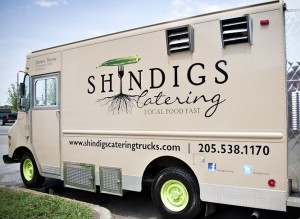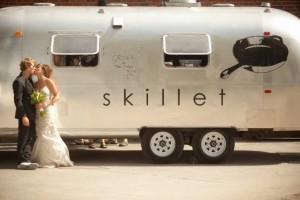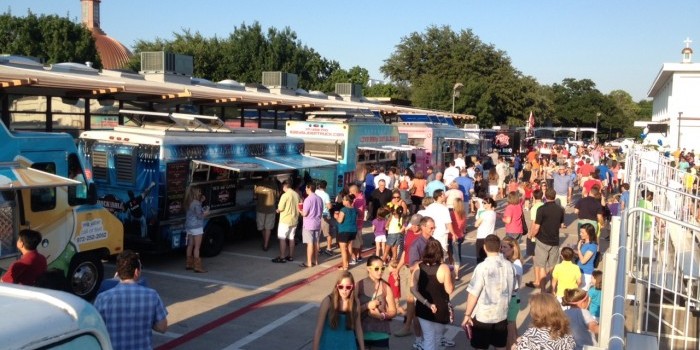The guests have been invited and the RSVP’s have returned. Now that your food truck catering client has a final head count and knows how many guests to expect, how do you know how much food to buy or order to satisfy their needs? This is a common question and is worthy of some consideration. No caterer ever wants to be in the embarrassing situation of having run out of food. Neither is it good to over-order, over-pay, and have to dispose of any leftovers.
Page Contents
- Catering Formula
- Calculating How Much Food To Buy
- 1. Understand the Event Details
- 2. Decide on the Menu
- 3. Calculate Quantities
- 4. Consider Logistics
- 5. Factor in Waste and Extras
- 6. Use Past Experience
- 7. Consult with the Client
- 8. Conduct a Final Review
- Develop a Catering Checklist
- My Rule of Thumb Catering Events
- Lessons Learned
Catering Formula
Here’s the exact formula I use to determine the cost of a catering event. Don’t worry, you don’t need to a math whizz to use this same approach.
Let me break down each of these variables:
- Food Cost (FC): The total cost of ingredients needed to prepare the menu.
- Labor Cost (LC): Wages paid to staff for the event, including prep, service, and cleanup time.
- Rentals (R): Cost of renting equipment or additional items not typically found in the food truck, such as tables, chairs, linens, etc.
- Transportation (T): Cost of transporting the food truck and any additional supplies to and from the event location.
- Miscellaneous (M): Any other costs associated with the event, including permits, insurance, or decor.
- Profit Margin (PM): The percentage of the total cost you add on top to ensure profitability. This is typically between 10% to 30% or more, depending on your business goals.
Example Calculation:
- Food Cost (FC): $500
- Labor Cost (LC): $300
- Rentals (R): $100
- Transportation (T): $50
- Miscellaneous (M): $50
- Profit Margin (PM): 20% or 0.20
Applying the formula:
($500 FC +300 LC +100 R +50 T +50 M) × (1+0.20) = $1,200 Total Event Cost
This formula gives you a baseline cost for the event. You would quote the client at least $1200 to cover your costs and include your desired profit margin. Depending on your specific situation, you may need to adjust or add more components to accurately reflect the cost of catering an event. Don’t forget to add spot for a tip too!
Calculating How Much Food To Buy
Develop a Catering Checklist

The catering truck outside a wedding event.
This checklist can be modified as needed to fit the specific requirements of different events or to align with the unique offerings of your food truck. This happens to be the checklist I used in my own food truck business. You can copy and paste this into you own spreadsheet and use.
[ ] Confirm Number of Guests[ ] Determine Type of Event (Wedding, Corporate, Casual, etc.)[ ] Establish Time of Day (Breakfast, Lunch, Dinner)[ ] Calculate Event Duration[ ] Assess Guest Demographics (Age, Gender, Dietary Restrictions)[ ] Finalize Menu Selection[ ] Protein Dishes[ ] Vegetable Dishes[ ] Carbohydrates[ ] Desserts[ ] Vegetarian/Vegan Options[ ] Special Dietary Requirements (Gluten-Free, Allergies)[ ] Adjust Quantities for Popular Items[ ] Decide Portion Sizes (Buffet Style, Bite-Sized for Tastings)[ ] Calculate Food Quantities[ ] Protein (4-6 oz per person)[ ] Vegetables (3-5 oz per person)[ ] Carbohydrates (4-6 oz per person)[ ] Adjust for Event Type and Duration[ ] Plan Beverage Quantities[ ] 2-3 Drinks Per Person for First Hour[ ] 1-2 Drinks Per Person for Each Additional Hour[ ] Check Storage and Transportation Capacity[ ] Ensure Adequate Equipment and Serving Ware[ ] Plan for 5-10% Overage for Unexpected Guests/Consumption[ ] Develop Plan for Leftovers[ ] Review Records from Past Events for Insights[ ] Discuss and Confirm Client Preferences and Budget[ ] Conduct Final RSVP Count Review and Adjust Plans Accordingly





